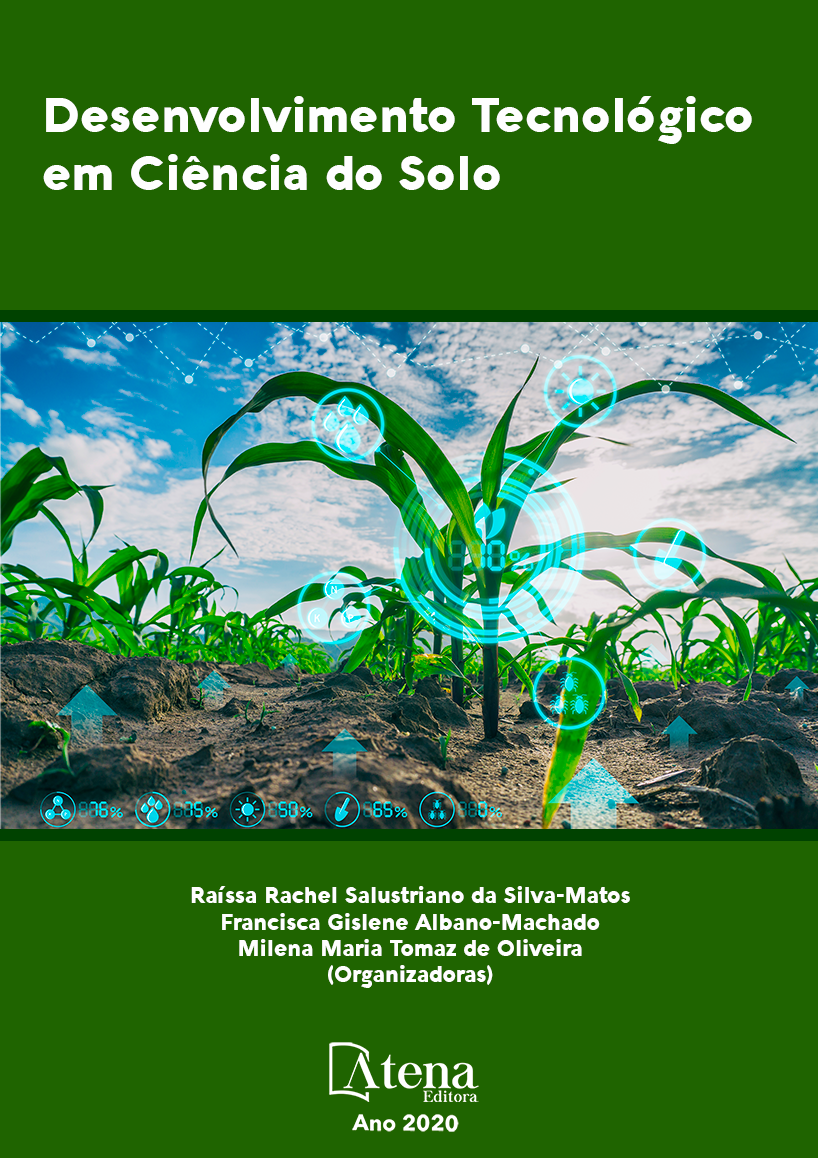
SISTEMAS DE PRODUÇÃO INTEGRADA E DESENVOLVIMENTO DA SOJA (Glycine max)
A Integração Lavoura-Pecuária e Floresta (ILPF) aumenta a diversidade microbiana, melhora a sustentabilidade e a resiliência do ambiente. Assim, o objetivo desse trabalho foi comparar o manejo de sistemas de produção integrada e convencional sobre o desenvolvimento de soja (Glycine max). As coletas de solo e planta foram feitas em áreas no município de Iporã, Perobal e Umuarama no estado do Paraná: um sistema ILPF (soja+eucalipto), agropastoril (AP) e plantio convencional (PC) respectivamente. As amostras de solo foram coletadas na profundidade de 0-10 cm, num total de 5 repetições de 10 sub-amostras, assim como coleta de plantas de soja em estádio reprodutivo num total de 10 amostras por área. No sistema ILPF, foram realizadas coletas nos renques (R) e entre-renques (ER). Foram avaliados: umidade do solo (%), matéria orgânico (MO), carbono da biomassa microbiana (CBMS) via fumigação-extração, respiração basal (RBS) e quocientes microbiano (qMIC) e metabólico (qCO2 ), massa seca das plantas e número de vagens por planta. Os dados foram submetidos à análise de variância e as médias comparadas pelo teste de Tukey (p < 0,05). Os teores de MO e CBMS foram menores em PC, seguido de ILPF nos R e maiores em áreas de ILPF nos ER e AP. A RBS foi maior em áreas de ILPF nos ER. A umidade do solo na área de ILPF nos R, foi fortemente influenciado pela presença do Eucalipto, sendo menor em relação às demais áreas, podendo ter influenciado o CBMS. O qMIC foi melhor nos sistemas ILPF e AP. Nas áreas de ILPF-R, a massa seca das plantas e o número de vagens foram menores também, entretanto, o número de vagens foi superior na área de ILPF-ER. Assim, concluímos que nas áreas de ILPF-ER o desenvolvimento da planta foi influenciado da atividade microbiana e pelo sistema de integração lavoura-pecuária.
SISTEMAS DE PRODUÇÃO INTEGRADA E DESENVOLVIMENTO DA SOJA (Glycine max)
-
DOI: 10.22533/at.ed.6232010082
-
Palavras-chave: ILPF; biomassa microbiana; qualidade do solo
-
Keywords: ILPF; microbial biomass; soil quality
-
Abstract:
The Crop-Livestock and Forest Integration (ILPF) increases microbial diversity, improves sustainability and the resilience of the environment. Thus, the objective of this work was to compare the management of integrated and conventional production systems on soy development (Glycine max). The soil and plant collections were made in areas in the municipality of Iporã, Perobal and Umuarama in the state of Paraná: an ILPF system (soy+eucalyptus), agropastoral (AP) and conventional planting (PC) respectively. The soil samples were collected at a depth of 0-10 cm, in a total of 5 replicates of 10 sub-samples, as well as collection of soybean plants in reproductive stage in a total of 10 samples per area. In the ILPF system, collections were made in the rows (R) and between rows (ER). The following were evaluated: soil moisture (%), organic matter (OM), carbon from microbial biomass (CBMS) via fumigation-extraction, basal respiration (RBS) and microbial (qMIC) and metabolic (qCO2) ratios, plant dry mass and number of pods per plant. The data were subjected to analysis of variance and the means compared by the Tukey test (p <0.05). The levels of OM and CBMS were lower in PC, followed by ILPF in the R and higher in areas of ILPF in the ER and AP. The RBS was higher in ILPF areas in the ER. The soil moisture in the ILPF area in the R, was strongly influenced by the presence of Eucalyptus, being lower in relation to the other areas, and may have influenced the CBMS. qMIC was better on ILPF and AP systems. In the ILPF-R areas, the dry mass of the plants and the number of pods were also lower, however, the number of pods was higher in the ILPF-ER area. Thus, we conclude that in the ILPF-ER areas, the development of the plant was influenced by microbial activity and by the crop-livestock integration system.
-
Número de páginas: 16
- Dayane Aparecida de Souza
- Ana Carolina de Almeida
- José Fernando de Oliveira Delgado
- Michaela Fernandes Sena
- Giovanna Letícia Poltronieri da Silva
- Milena Cremer de Souza
- Maicon Andreus Godoi de Souza
- Leopoldo Sussumu Matsumoto


